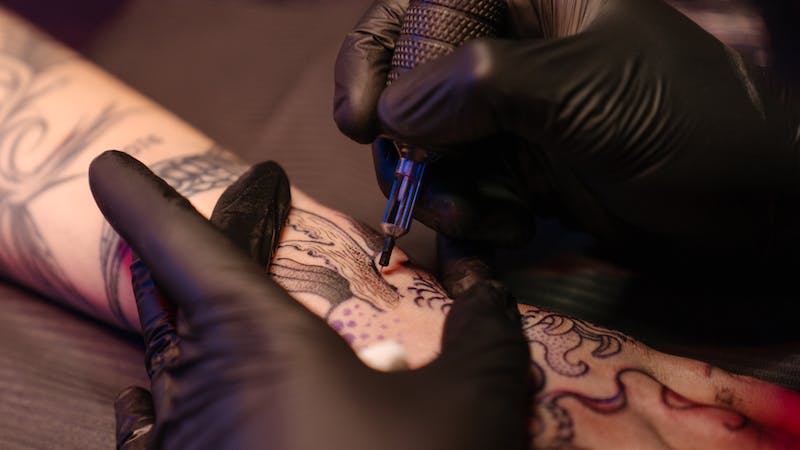Tattoo Removal Aftercare: Tips for Promoting Healing and Minimizing Scarring
Tattoos are a canvas of self-expression, but sometimes they no longer align with our current self. The good news is that tattoo removal has become more advanced and accessible than ever before. However, successful tattoo removal doesn’t end with the last laser session or surgical procedure. Aftercare plays a crucial role in promoting healing and minimizing scarring, ensuring that you achieve the results you desire.

In this article, we’ll explore the tattoo removal process, the science behind scarring, and the most effective aftercare tips to guide you on your journey to ink-free skin. You’ll also discover the impact of lifestyle choices on the healing process and learn from personal stories and testimonials. Whether you’re considering tattoo removal or have just started the process, this article will provide you with the knowledge and confidence you need to optimize your results.
The Tattoo Removal Process
Tattoo removal methods have come a long way, offering multiple options to suit your specific needs. The most common methods include laser removal, surgical excision, dermabrasion, and more. Each method operates differently, but they all share a common goal: breaking down the ink particles and allowing your body to gradually eliminate them.
Laser Tattoo Removal
Laser tattoo removal is a widely chosen method due to its efficacy and minimal scarring risk. It utilizes specialized laser light to break down tattoo ink while protecting the surrounding skin. The choice of laser depends on the ink color, with darker pigments often responding better to Q-switched lasers and lighter colors to ruby lasers. Most cases require multiple sessions, and temporary side effects like redness, swelling, and blistering are common, along with possible changes in skin color, especially for those with darker skin tones.
Laser tattoo removal offers a reliable and proven approach to removing unwanted ink, but the number of sessions and the treatment’s effectiveness can vary based on factors like ink color, tattoo age, and skin type. Proper aftercare is essential to achieve the best possible results and minimize complications. If you’re considering Utah laser tattoo removal, it’s advisable to consult with a qualified practitioner who can assess your unique tattoo and develop a personalized treatment plan for you.
Surgical Excision
In some cases, surgical excision is the best option. This method involves cutting out the tattooed area and stitching the skin back together. It’s often used for smaller tattoos and offers quicker results.
Dermabrasion
Dermabrasion is a process in which the top layer of skin, along with the tattoo ink, is mechanically sanded off. It’s effective but can be painful and may require multiple sessions.
Factors Influencing Tattoo Removal
The success of tattoo removal depends on various factors, such as the tattoo’s age, ink type, and location. Newer tattoos are generally easier to remove than older ones, and certain ink colors are more stubborn than others. Tattoos on areas with excellent blood circulation tend to fade faster due to the body’s natural ability to flush out ink particles.
The Role of Aftercare in Tattoo Removal
Aftercare is where the magic happens in the tattoo removal process. It’s not just about following post-procedure instructions; it’s about understanding the science behind scarring and how proper aftercare can prevent it.
Tattoo Removal and Healing Process
After your tattoo removal session, your body immediately starts working to heal the treated area. This involves the formation of a scab and the gradual elimination of ink particles through your lymphatic system. The process takes time and requires careful attention to avoid complications.
Preventing Scarring
Scarring can occur if the skin doesn’t heal properly or if you don’t take the necessary precautions. The good news is that you can minimize scarring by diligently following aftercare guidelines and making some mindful lifestyle choices.
Tattoo Removal Aftercare Tips
Effective aftercare begins immediately after your tattoo removal session and continues for several weeks. Here are some essential tips to promote healing and minimize scarring:
Immediate Aftercare Steps
Wound Care and Dressing: Keep the treated area clean and follow the provided dressing instructions. Regularly change dressings to prevent infections.
Medications and Ointments: Apply prescribed or recommended ointments to the treated area as directed. These products aid in the healing process and reduce the risk of infection.
Long-Term Aftercare Tips
Avoid Sunlight and Tanning Beds: UV exposure can cause hyperpigmentation in the treated area and increase scarring risk. Always use a high-SPF sunscreen or cover the area when exposed to the sun.
Proper Hydration and Nutrition: A well-hydrated body is better equipped for the healing process. Drink plenty of water and maintain a balanced diet rich in vitamins and minerals.
Scar Management Techniques: Consider using scar management products like silicone gels or sheets to reduce the appearance of scarring.
Follow Professional Advice: Your tattoo removal specialist knows your specific case best. Don’t hesitate to reach out if you have questions or concerns during the healing process.
The Role of Lifestyle Choices
Your lifestyle choices can significantly impact the tattoo removal process. Here’s how they come into play:
Smoking and Alcohol: Smoking and excessive alcohol consumption can slow down the healing process and increase scarring risk. Quitting or reducing these habits can lead to better results.
Exercise: Moderate exercise can help improve blood circulation, which aids in the tattoo removal process. However, avoid strenuous activities that may irritate the treated area.
Stress Management: High stress levels can affect your body’s ability to heal efficiently. Implement stress-reduction techniques such as meditation or yoga to support the healing process.
Common Aftercare Mistakes to Avoid
While aftercare is crucial, it’s equally important to steer clear of common mistakes that can hinder the healing process:
Overlooking Professional Advice: Your tattoo removal specialist provides specific instructions for a reason. Ignoring their advice can lead to complications.
Ignoring Sunscreen: Failing to protect the treated area from the sun can result in hyperpigmentation and scarring. Apply sunscreen diligently.
Excessive Touching and Picking: Avoid touching or picking at the scab or the treated area. Let the healing process take its course without interference.
Conclusion
In the journey towards tattoo removal, your commitment to aftercare is paramount. By understanding the tattoo removal process, the science of scarring, and implementing proper aftercare tips, you can optimize your results and minimize scarring.
Remember that lifestyle choices, such as quitting smoking and alcohol, embracing a balanced diet, and managing stress, play a significant role in the healing process. The stories of those who have successfully navigated this path should serve as motivation and a source of guidance.
By avoiding common aftercare mistakes and staying true to professional advice, you can achieve the best possible outcome in your quest for ink-free skin. So, take these aftercare tips to heart, and soon you’ll be celebrating the successful erasure of your unwanted ink. Your journey to a clean canvas has only just begun.



